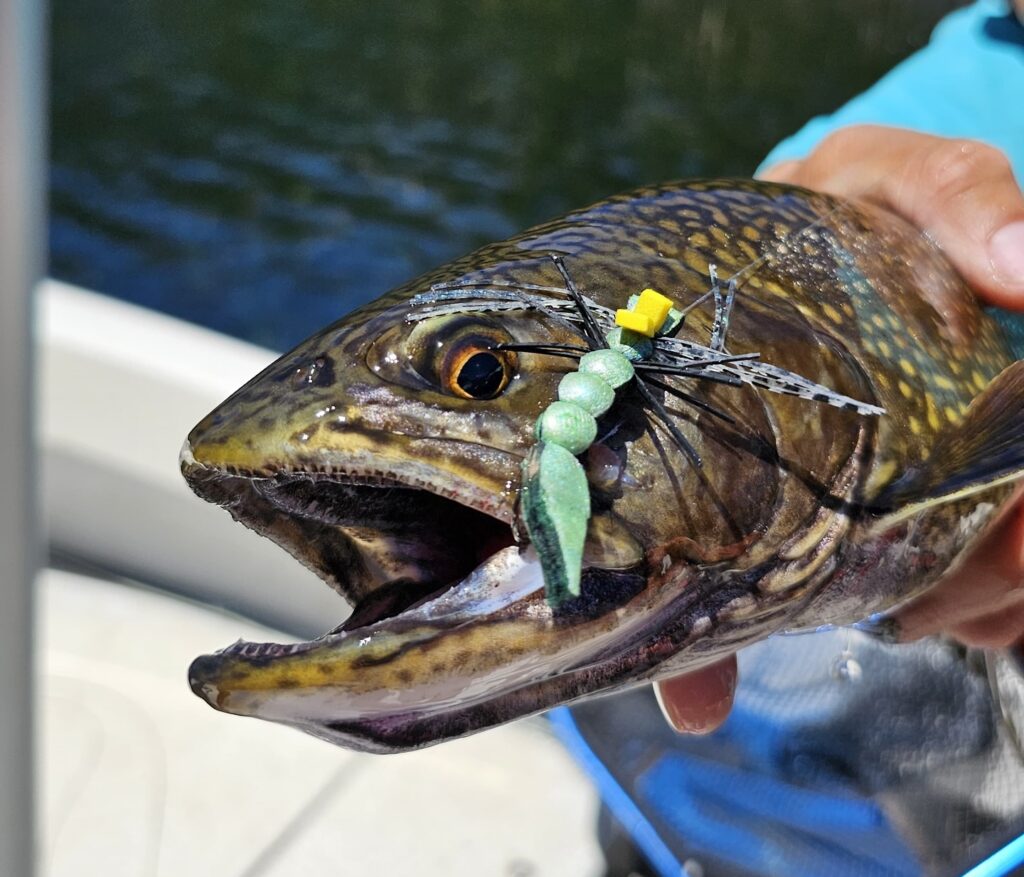When most fly anglers think about matching the hatch, they imagine mayflies, caddisflies, or stoneflies drifting down the river. But come summer, there’s a whole new menu item on the water that trout can’t resist: terrestrials.
Terrestrials are land-dwelling insects that accidentally end up in the water—and when they do, trout are more than happy to take advantage. Fly fishing with terrestrials is fun, visual, and surprisingly effective, especially when hatches slow down in the heat of summer.
What Are Terrestrials?
Terrestrials are insects that don’t hatch from water but live on land—often near the riverbanks—and fall or get blown into the water. These bugs are often clumsy swimmers and stick out on the water’s surface, making them easy targets for trout.
Common Terrestrial Patterns:
Grasshoppers: Big, meaty bugs that trout will absolutely crush. Fish them close to grassy banks.
Ants: Especially good during mid-to-late summer when flying ants swarm. Trout love them in slow pools.
Beetles: Glossy and subtle—beetle patterns are great when trout are spooky and picky.
Less Common Terrestrials Trout Eat:
Crane Flies: Long-legged, awkward flyers that fall in the water like a stick. Fish often take them with gusto.
Caterpillars and inchworms: Dropping from overhanging branches, especially in wooded areas.
Spiders or bugs with long legs: Not traditional patterns, but trout often eat them when they hit the water.
How to Fish Terrestrials
1. Dry Fly Alone
When fish are rising—or even if they’re not—a single terrestrial dry fly can do the trick.
Target shady spots under overhanging trees, grassy cutbanks, or foam lines.
Let it drift naturally, but a little twitch can sometimes trigger a strike.
Cast close to the bank, even bumping the shoreline. That’s where the bugs fall in.
2. Dry-Dropper Rig (and Terrestrial Tricks)
Dry-droppers are especially effective with terrestrials. You can use a buoyant hopper or beetle as your top fly and trail a smaller nymph or emerger below.
Tips & Tricks:
Use a short dropper in shallow riffles (6–12″) or a longer one (18–30″) in deeper runs.
Try a tiny ant or beetle as the dropper! Yep—double terrestrial! Great when trout are keyed in on tiny bugs.
Mix it up with a flashy dropper like a Copper John or Frenchie to add contrast and get deeper.
Use foam flies like the Chubby Chernobyl or Fat Albert to keep your dry floating high with a heavier nymph beneath.


When and Where to Fish Terrestrials
-
Summer and Early Fall are peak terrestrial seasons—especially mid-morning through evening.
-
After windy days or storms, more bugs fall in the water, and fish know it.
-
Tailwaters and freestones both fish well with terrestrials, especially near meadows or brushy banks.
Top Terrestrial Patterns to Carry
-
Hopper – Morrish Hopper, Rainy’s Grand Hopper, or a basic foam hopper.
-
Ant – Parachute Black Ant, Flying Ant, or a Hi-Viz Ant.
-
Beetle – Foam Beetle, CDC Beetle, or Hippie Stomper.
-
Chubby Chernobyl – The Classic dry fly. Great for dry-dropper setups.
-
Crane Fly – The Daddy Hog Dry.
-
Inchworm – Simple green chenille fly for overhanging tree zones.
Fishing with terrestrials is one of the most enjoyable ways to target trout. It’s visual, seasonal, and often underutilized. Whether you’re casting a solo beetle under a willow tree or drifting a hopper-dropper combo along a grassy bank, terrestrial fishing is all about thinking outside the hatch.
So next time you’re on the water and the bug activity seems quiet, look above the water instead of in it—because when land bugs fall in, trout notice.


Leave a Reply